Four mothers on what it’s really like working in the creative industry

We’re made to believe fashion isn’t built for mums. From a world-renowned stylist to a furniture designer, five women filled us in on what this means in 2025, and what changes need to happen.
Culture
Words: Eni Subair
Motherhood looks different for everyone – especially in the workplace. In November, UK-based charity The Female Lead reported that a third of mothers are at breaking point due to a lack of support at work. Research revealed that 35 per cent of UK and US mothers who have gone back to work in the last five years found the environment to be unsustainable. An astounding 47 per cent of those are ready to hand in their notices.
The pay gap between Black and ethnic minorities versus white women is a whole other beast. In 2023, the Fawcett Society found that minority women were at even more of a disadvantage in terms of the “motherhood pay penalty”, the stark fact that women with children are paid less than those without.
But how does motherhood play out in a creative industry largely peopled by women but also characterised by anti-social, anti-family hours?
When former Celine designer Phoebe Philo launched her namesake brand in 2023, her debut collection sparked conversations for all the right reasons – e.g. great clothes – but also for a silver-rendered “Mum” necklace. As the Guardian’s Ellie Violet Brambley wrote at the time: “With it she arguably brought motherhood in from the cold in an industry that is known to favour nights out over nights in and glamour over the daily grind.” Although admittedly a hefty price to pay for an accessory that accredits the backbone of society – the necklace carried an eye-watering £3,000 price tag – it was a gesture that offered more than most in an industry not exactly oozing maternalism.
It’s not surprising Philo decided to pay it forward to mothers. In 2005 the designer, at the time the creative director of French luxury house Chloé, took maternity leave – a rare move in the industry at the time. Then, after resuming her role, she decided to step away again the following year to raise her family. It was one of few instances of a high-profile fashion figure forgoing her career to foreground her children.
The conversations around maternity leave – whether to take it, how much to take – continued in the industry, sometimes even emanating from women. In 2009, Alexandra Shulman, then British Vogue editor-in-chief, penned an essay arguing that mothers’ rights were making women unemployable. “What I don’t understand is the idea that you should be able to keep exactly the same job, and work less for it, regardless of how that affects the office or colleagues,” she wrote of women who want to “investigate four-day weeks, flexitime, job shares… then have another baby and are entitled to take another year off.”
Today, the creative industries’ relationship with mothers continues to evolve in real time, and the current musical chairs of creative directors only highlights the lack of women hired to steer luxury brands. Even if Matthieu Blazy was replaced at Bottega Veneta by a woman, Louise Trotter, she remains in the minority, while the lack of Black and brown women – mothers or otherwise – in creative director roles is painfully apparent.
“Talking about balancing motherhood and work, or life in general, is a Catch-22,” one London-based mother in the industry tells me. “If I speak candidly, I’m at risk of pissing off my employer – albeit they are for the most part supportive. If I gloss over some of the challenges, it’s counterproductive in trying to address the major problems for working mums or those hoping to have children within our industry and others.”
Here are some of the the things mothers in the creative industries have experienced.
Francesca Capper: co-founder and designer of Poster Girl. Mother to six-month-old Vincent

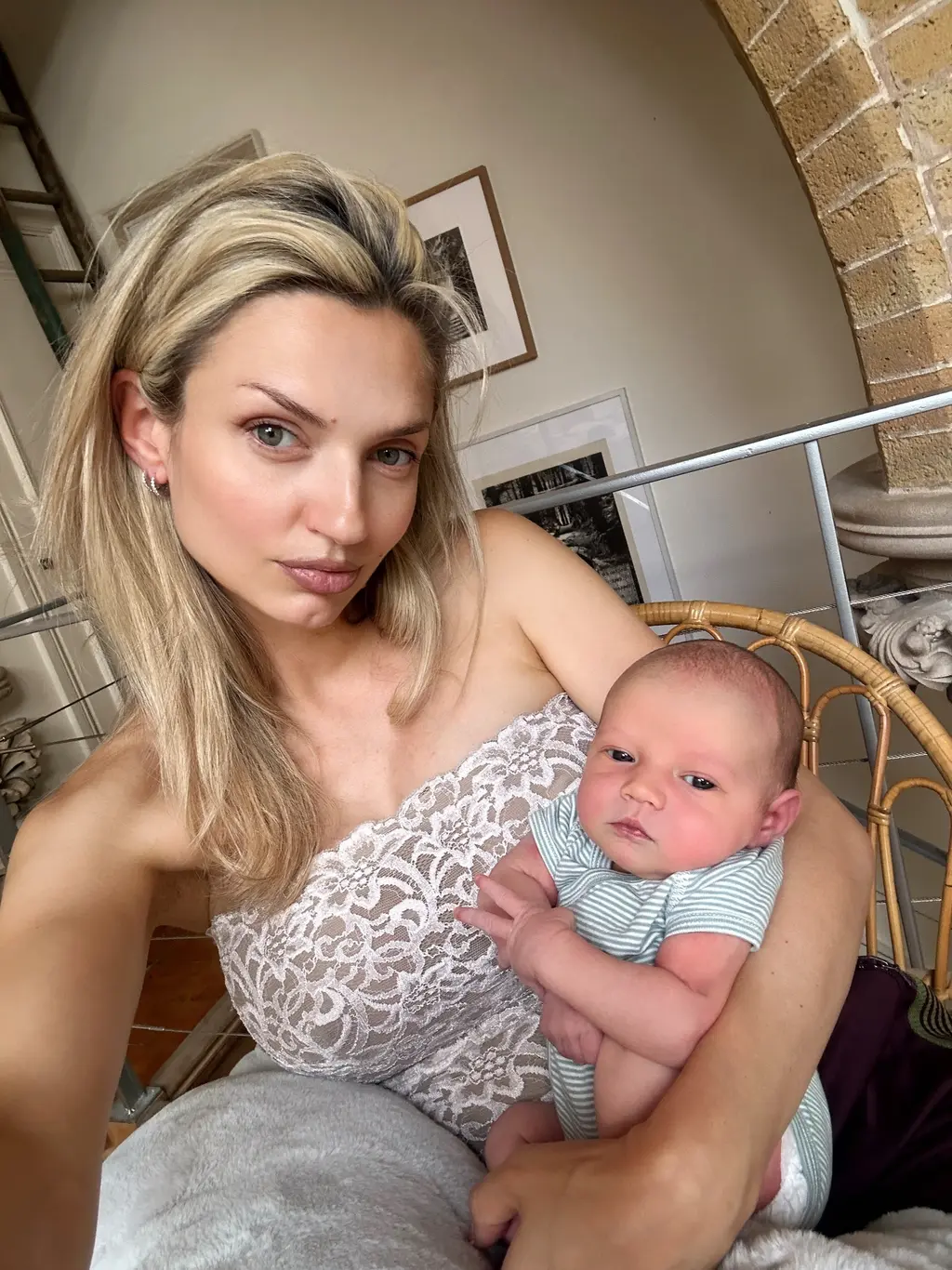
“Before I co-founded Poster Girl, I interned for Dior’s couture department, Vivienne Westwood and Alexander Wang. All three internships were a few months at a time across Paris, London and New York and gave me an understanding of the industry. Poster Girl came to life eight years ago. I’d met my business partner, Natasha Somerville, at Central Saint Martins while we were studying BA womenswear.
The brand was conceived in 2017 in my old bedroom in Homerton [East London], one year after graduating. Natasha and I each put £4,000 of our savings into making chainmail pieces and a small eight-piece capsule line. Opening Ceremony and Selfridges picked up the brand a month after launching.
It’s difficult to find your tribe in fashion but, ultimately, having a business partner does take that strain away: you have someone to bounce ideas off and talk ideas through. Having kids was something that crossed my mind but I would often think about how it would work while running Poster Girl. My husband is a bit older, and I knew it would be ideal to happen sooner rather than later, but it boiled down to figuring out the right time for both of us. Having a partner who’s also creative meant that we would have candid conversations about how we’d navigate being parents.
Vincent was born two weeks after his due date, and two months later I was back in the office. Running my own business meant that it was hard to take as much time off as I would have liked. It’s a double-edged sword because I feel comfortable being able to go to the office with my baby – but as co-owner, I can’t take a huge amount of paid time off.
During Vincent’s first few months, a typical day for me involved taking him into the office. My husband works from home so we’d alternate when I couldn’t take him with me. But I’d be breast pumping regardless of whether he was with me or not. Pumping in the office has never been an issue, which, I suppose, is – depressingly! – a perk of working for yourself. Natasha and I have a chill environment and there would never be any judgement for something as natural as feeding your child. But if I were working for someone, I’m not sure how I’d feel.
A mix of women in the fashion industry have reached out to me, which has been encouraging, as fashion isn’t very open when it comes to motherhood. Having candid chats with women who are going through the same thing makes you feel as though you’re part of a special community. There’s an instant respect and bond there. It’s early days, but I feel like there is the bare bones of something growing.”
Kusheda Mensah: furniture designer and founder of Modular by Mensah. Mother to four-year-old Sior and Soleil, one
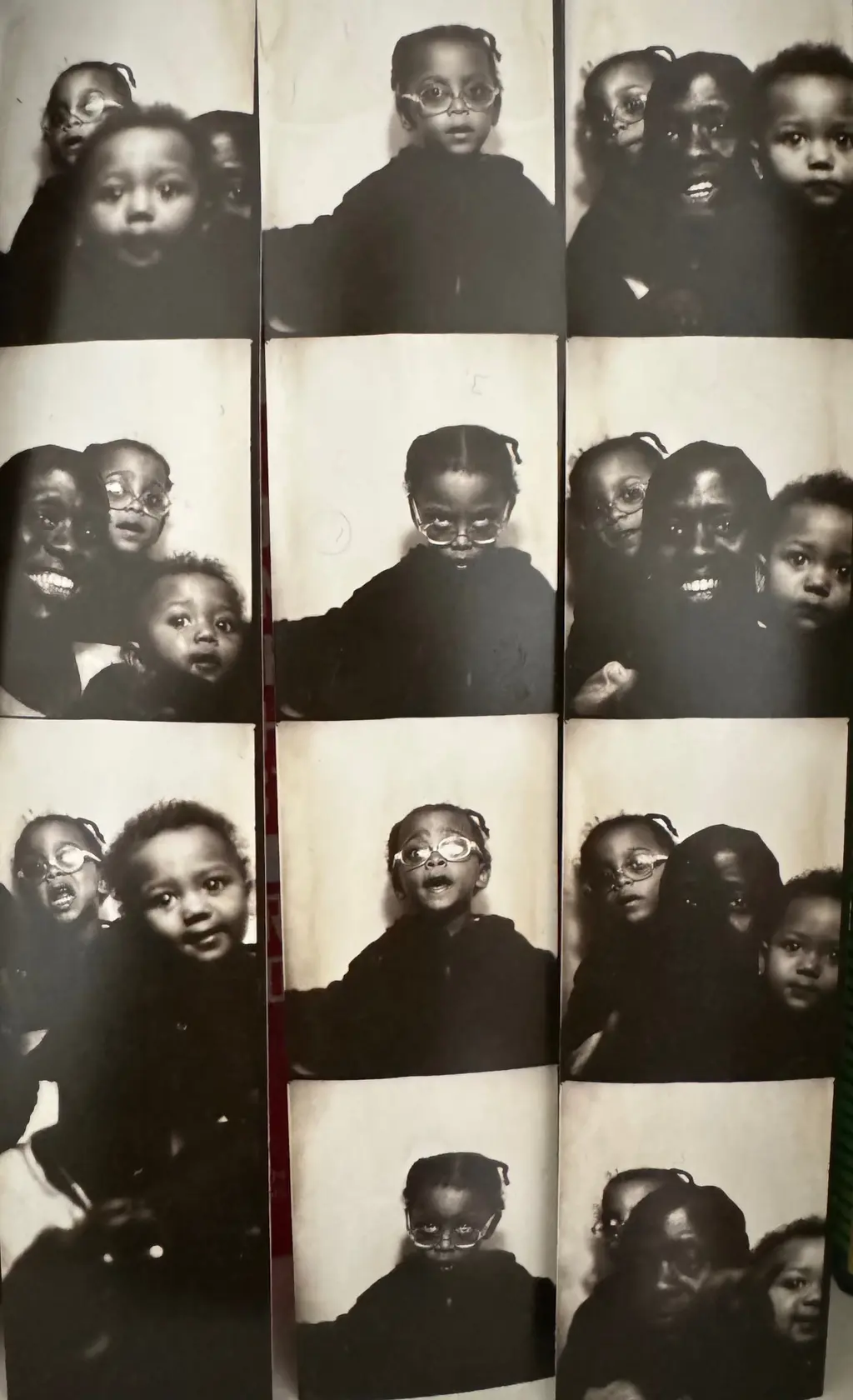
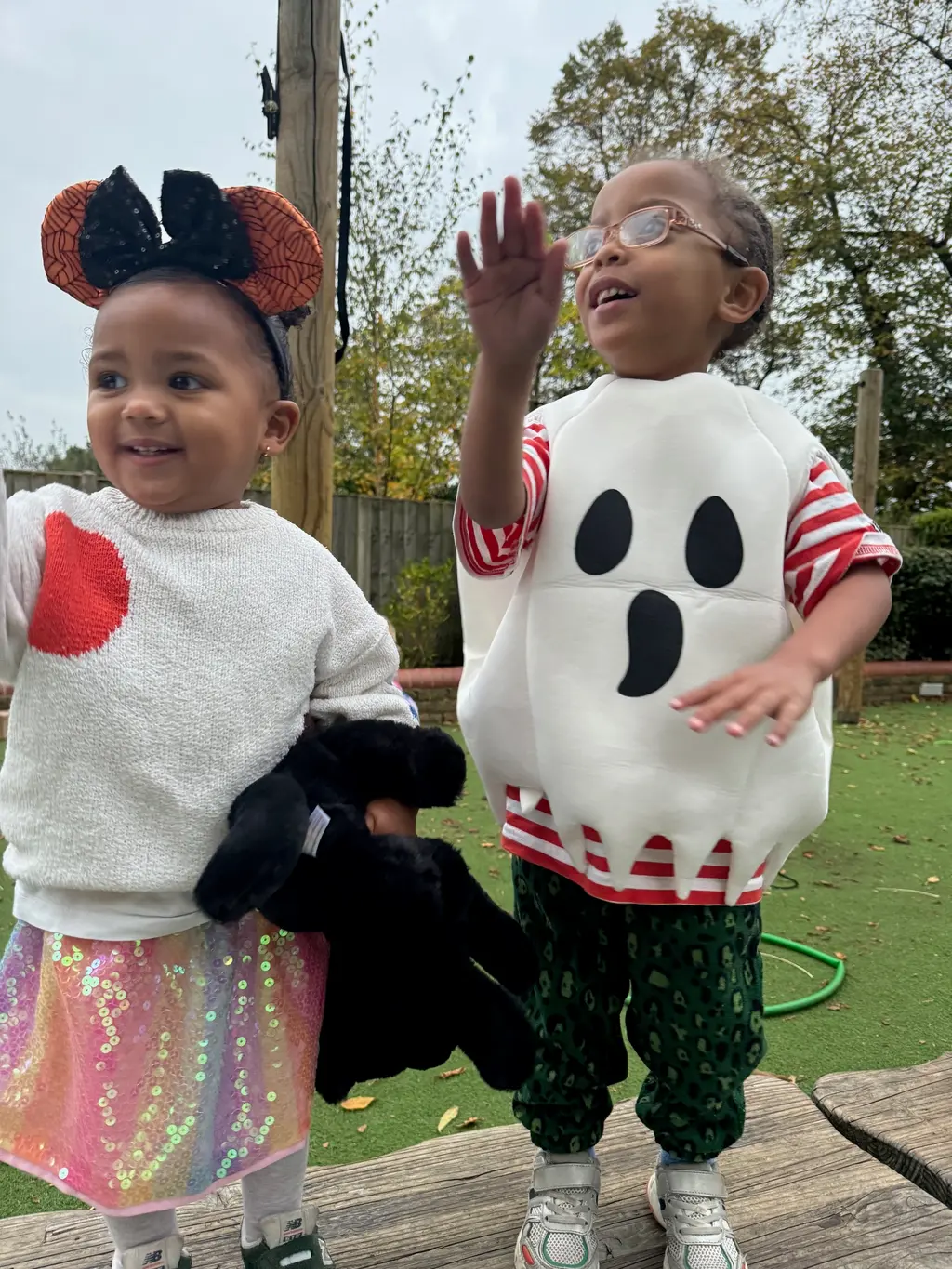
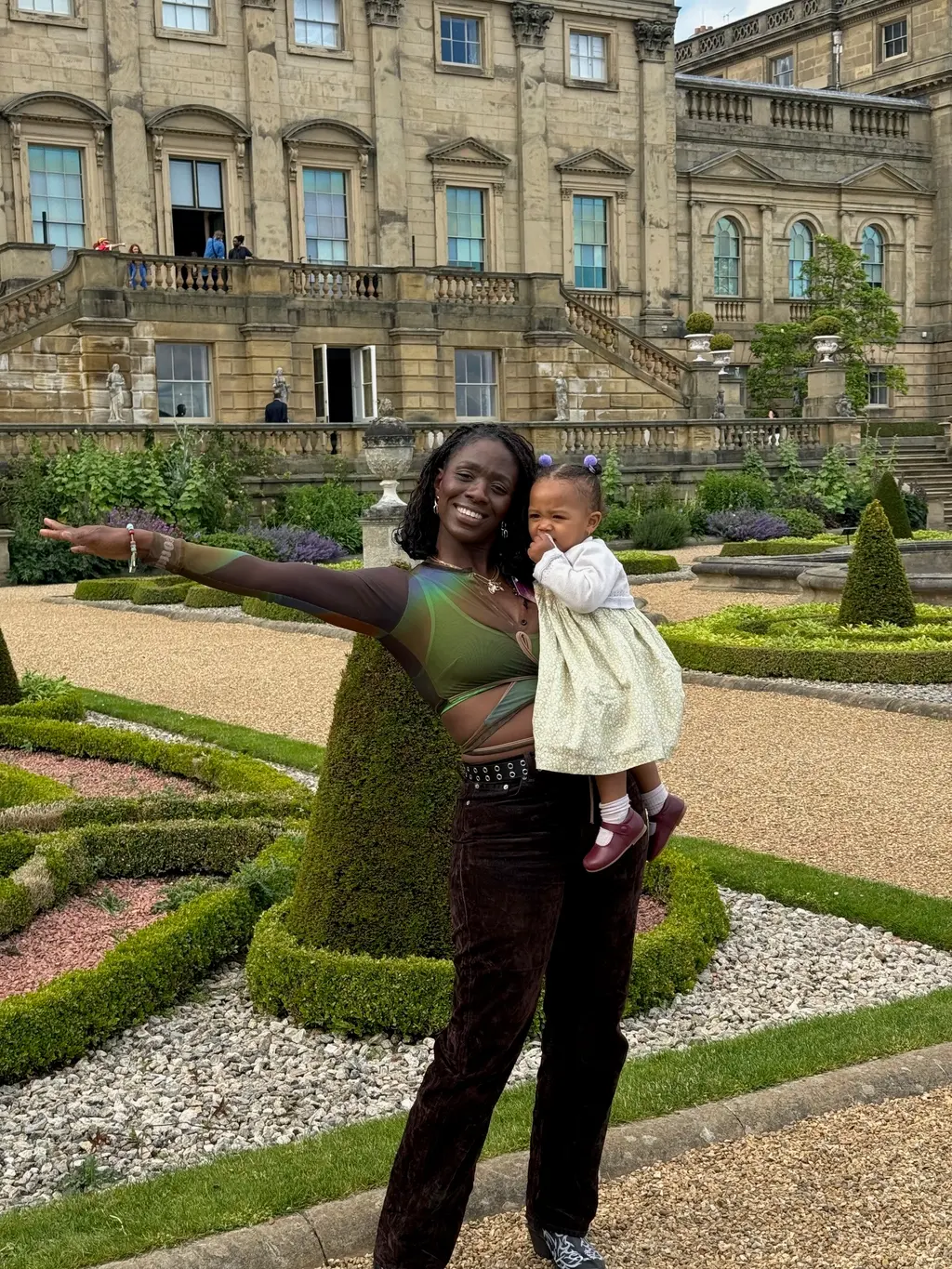
“My first son was born six months premature in February 2021. Sior weighed 750 grams and as a result, he had to have a lot of surgeries. At the time, I was working on something for a private client in Abu Dhabi, and I continued this while visiting my son around the clock. Perhaps I picked up my Ghanaian parents’ immigrant mentality: you have to get up, pick yourself up, make it work…
I had to be in hospital every week after giving birth, and there were constant checks on my son’s eyes and tummy because he had hernias from where he’d had his surgeries on his stomach. As a result, I didn’t have the typical ‘maternity’ leave experience. My real experience of maternity leave came after I had my second child, Soleil.
In 2022, I was nominated for a Hublot prize when I was pregnant with Soleil. I didn’t tell anyone. As a pregnant woman and a creative person, you get insecure about what the internet thinks of your work. Part of the nomination included pitching reasons why you should be given funding. The whole time I remember thinking: “Oh my God, who’s going to give a pregnant woman this funding?” But then I revealed my pregnancy during my pitch, and it felt like a relief.
Soleil was born full-term and soon I had to deal with the realities of running my business and having two kids that are close in age. I pulled Sior out of his nursery because it was too much having a newborn baby and [also] having to commute [Sior] back and forth to nursery.
My [second] maternity leave was one of the most precious times. Seeing both of my kids interact was special. But there are still moments when I think: have I entered the right industry to raise kids? Working for myself, I can navigate the school run. But not everyone can do that. On the flip side, having meetings with my kids around is difficult, because they just want my attention and my partner works a nine-to-five.
There are so few Black people and POC’s within the furniture design world that it can feel incredibly competitive and as though there can only be one of us in the industry at a time. A lot of my friends who have had kids are in the fashion field, and I’m quite envious of the fact that they all have each other, because design is quite elitist. Not that the fashion industry isn’t the same. But with design, if you really want to make an impact, you have to travel and build relationships. I don’t have that capacity now, because people need me at home. Luckily, my family has been instrumental for me [by offering support].”
Anna Trevelyan: stylist, creative director and consultant. Mother to a 10-month-old son

“My first photoshoot after some time as a styling assistant was on set with Naomi Campbell and Marc Jacobs, and it was shot by Ellen von Unwerth. It was for a German magazine, and the cover featured Naomi and Marc boxing in a ring. There was an accident on the Eurostar on the way to the shoot and I was three hours late. I remember thinking: ‘I can’t believe I’m later than Naomi Campbell!’
When I eventually arrived on set, it was such fun. I loved it. A large proportion of people discovered my styling through my work with Lady Gaga and Nicola Formichetti [former Dazed creative director] as his assistant. Ellen and I met through Lady Gaga, and Ellen was really supportive of me during the early days. She booked me a lot, which was huge for me because I had her pictures on my walls at home growing up.
Around 2008, I was travelling back and forth between London and LA, and I ended up working on a lot of fashion and beauty shoots. As a result, I ended up getting an agent at quite a young age.
As a freelancer, before I had my son, I’d always had reservations about having kids. I was very nervous about how it would work with work. I would wonder how kids affect people’s jobs because it’s not something that you hear talked about [in fashion] – you don’t see kids on set very often. So I thought to myself: “OK, let me get myself into a position where I can save enough and afford to take time off.”
Once I found out I was pregnant, with the exception of Sophia Neophitou [editor-in-chief of 10 Magazine], there wasn’t anyone that I’m close to [in fashion] that I could speak to about motherhood. She gave me a lot of advice. However, over time, other mothers have reached out to me and we have built a strong community that I’m very grateful for.
Now, as a mother of one, I’m more attuned to the disparity between men and women in the industry. As much as the fashion industry is an amazing place – I’ve worked in it for 20 years – if you look at who is at the top, it’s mainly men in positions of power. Design jobs at big houses go to men and it’s quite hurtful watching that happen on a loop.
Six weeks after giving birth I was back on set styling Tyla for a shoot with V Magazine. I’m glad I did it because I loved the story. It was something that I did because I have a passion for my job, not because it was a necessity. Some don’t have that option. If there was an opportunity for childcare on set, that alone would be such an improvement for women with kids. Just because we’re mothers doesn’t mean we’re any less driven or creative. If anything, we’re more hardworking because we’ve given birth. After you’ve been through that, you know you can do anything.”
Tyler Phoenix: manicurist and mother to 15-month-old Lo
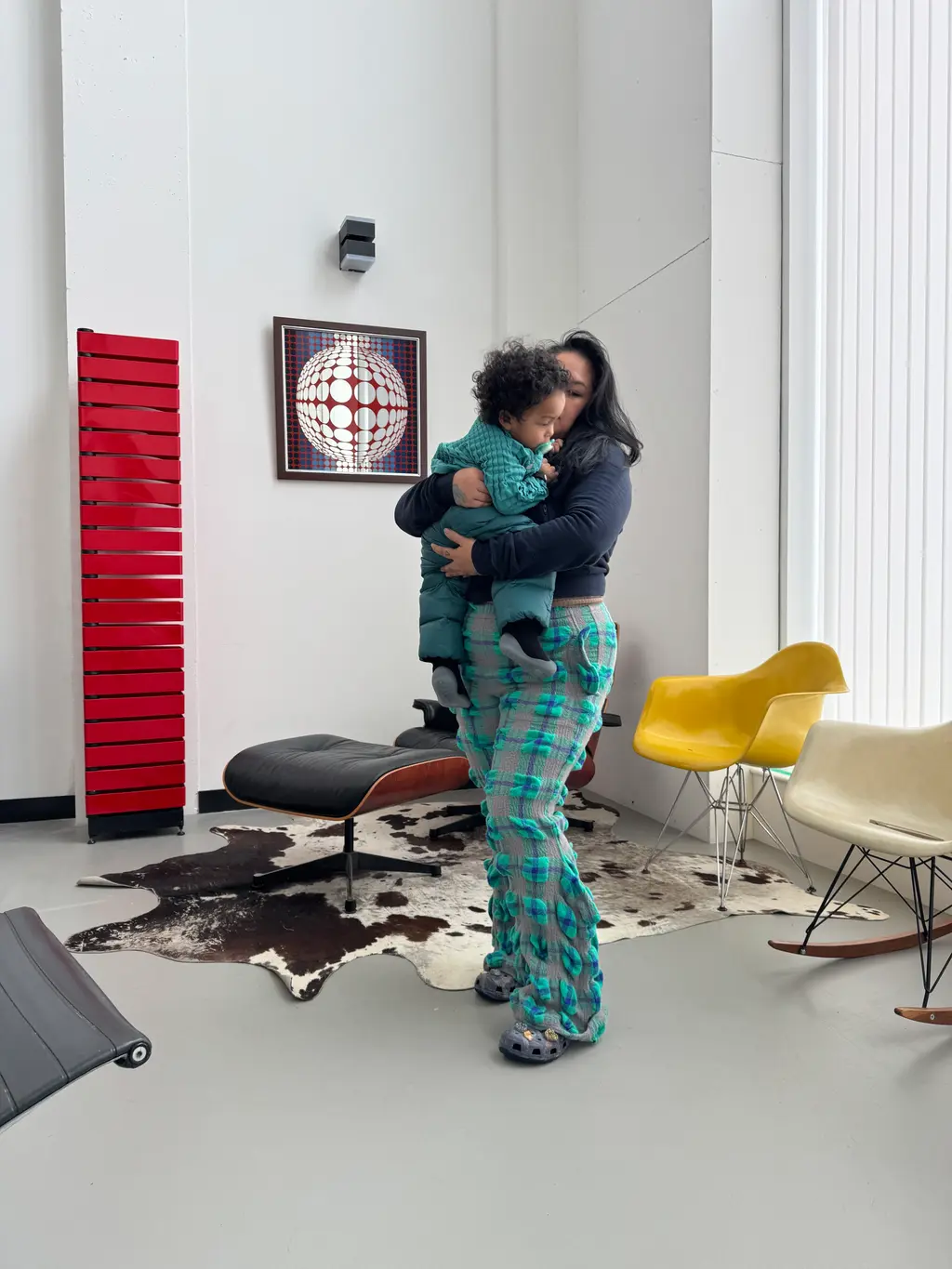
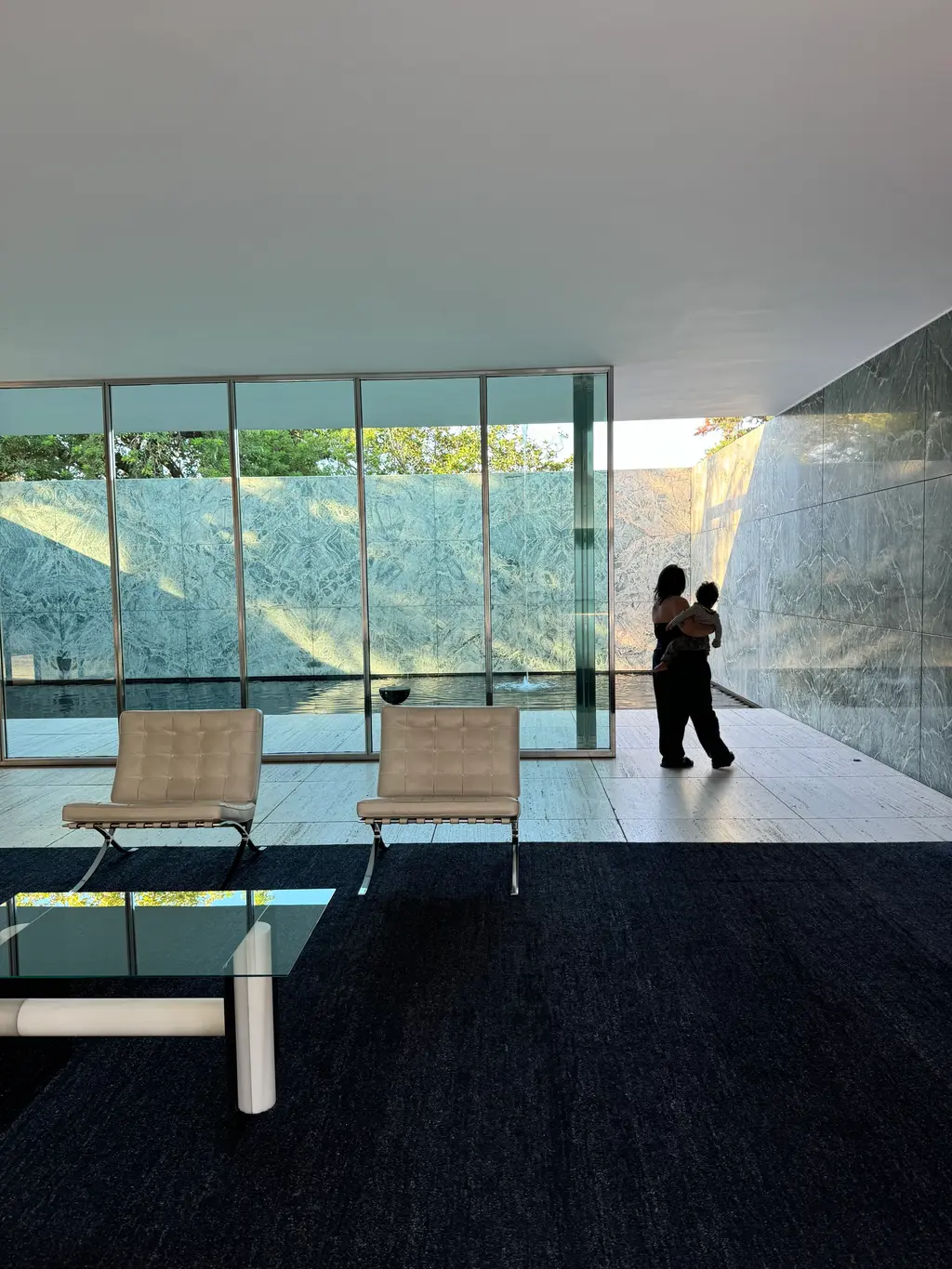
“Working in my family’s London nail shop, Art of Nails, is where I developed my love for nails. Growing up in Deptford, my sister and I used to hang out at my auntie’s nail salon, and I began illustrating nails with fashion references. I studied hair and beauty at Bromley College… and by 2018 my work was being recognised in fashion spaces.
The first show I assisted on as a manicurist was for Mowalola. It wasn’t too dissimilar to working at my auntie’s salon. You’ve got to be on time; you need to know how long you do your treatments; you need to be on time. I had four hours to do models’ nails and it wasn’t as overwhelming as I’d initially thought it would be.
I assisted two or three more times, people started recommending me and, before I knew it, I began getting solo jobs.
When I fell pregnant with Lo, I was very conscious of the time that I was spending outside of home. [When I was heavily pregnant] I had to turn down jobs that I knew would keep me away all day. While in New York, I worked with a make-up artist called Mimi, who would always bring her baby on set. I remember asking her: “How did you feel when you got pregnant? And did you feel like jobs would pass you by due to your pregnancy?” Mimi told me she’d never felt that way. On every job she worked, she requested that her baby be allowed on set – and that gave me some confidence.
As a freelancer, maternity leave doesn’t exist. In my case, I was able to take six months off. Due to my partner’s job flexibility, he was able to be with our son, too. When I returned to work, that continued.
Having my son has made me realise things aren’t in my control. I feel like I can’t bring him on set because if he were to have a tantrum or generally be unhappy while I’m working on someone’s nails, it would be disruptive and I’d feel under immense pressure [to calm him down]. I don’t want to be seen as different or unprofessional. My partner’s a photographer, and [yet] when he’s taken Lo to the studio or in a space with other creatives, people are always like: ‘Oh my God! this is so sweet.’ I wouldn’t get the same reaction on set.”








